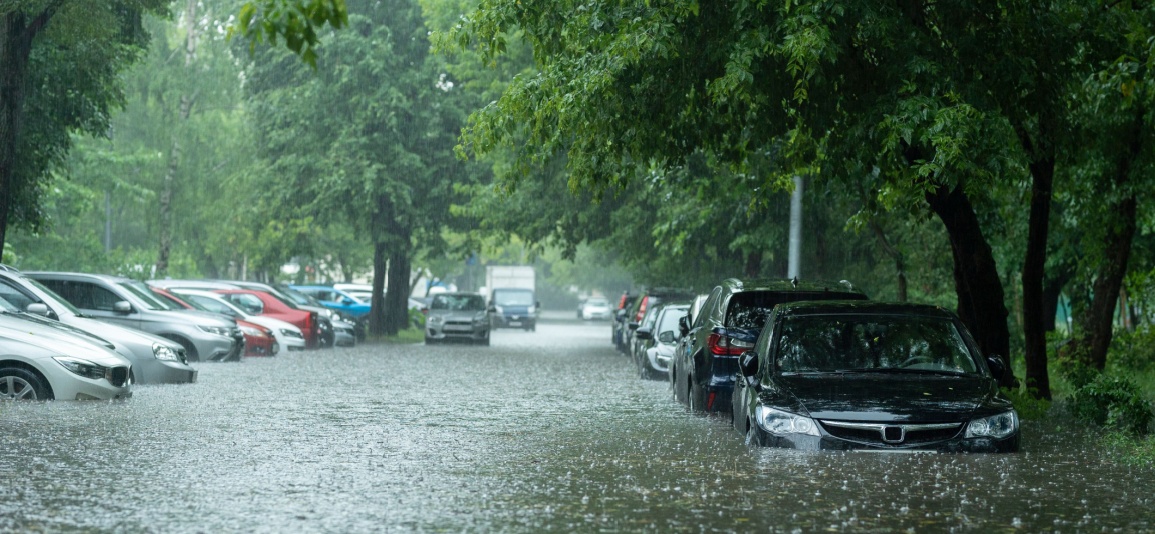Thinking beyond flood recovery grants
Climate ResilienceRisk ManagementArticleApril 24, 2024
Since the winter of 2023, we've had 11 named storms, from Agnes to Kathleen. This is the joint highest number of storms we've named in a year. As a result, there has been widespread flooding. These storms have caused extensive damage and flooding across the country due to strong winds and heavy rainfall.
On the 2nd January 2024 Storm Henk hit, bringing winds gusting at over 58 miles per hour and over 150% of the four-month average rainfall in just a few days. This caused power outages, widespread flooding, severe travel disruption, and most tragically, a fatality1.
The data shows that the UK is experiencing more and more extreme weather events. For instance, in the winter of 2020-2021, the nation was hit by five major storms2, and as of now we have already seen ten significant storms in the 2023-2024 season. Their impact is hitting households, businesses and the economy hard.
The costs add up
The impact of severe weather events like this on the UK economy is substantial. For instance, Storm Henk resulted in approximately £150 million ($190 million) in insured losses and affected around 2,000 properties due to high winds and heavy rain, as reported by PwC3 consultants.
Clearly flooding is an all-year-round problem, yet the nation hasn’t fully factored in the challenges that lie ahead, undervaluing climate risks and not taking full account of the impact that extreme weather events can cause.
Flood Re estimates that one in every six properties in the UK is at a higher risk of flooding than ever before.
The insurance industry is doing what it can to help property owners manage their risks. The Flood Re Scheme is an industry-wide initiative that helps makes home insurance more affordable to households at risk. Build Back Better also enables householders to install flood resilience measures when repairing a property after a flood.
The government is also taking action. Following a visit to the sites worst affected by the floods of Storm Henk, Floods Minister Robbie Moore told the House of Commons that “Since 2010, the government has invested over £6 billion to better protect over 600,000 properties from flooding and coastal erosion.”4 He also highlighted that households affected by flooding can apply for up to £500 to quickly assist with immediate costs.
Are grants for businesses enough?
This £500 allowance is part of the Flood Recovery Framework, which includes a number of measures to help communities affected by flooding. The package is designed to make grants quickly available in order for businesses and communities to get back on their feet as soon as possible. The framework includes:
- A Business Recovery Grant of up to £2,500 for small-to-medium sized businesses in eligible affected areas
- 100% council tax and business rates relief for at least three months for households significantly affected
- A grant of up to £25,000 through the Farming Recovery Fund for farmers whose land has undergone uninsurable damage5
However, insurance data suggests that the grants may be falling short, with insurers seeing a spike in claims amounts. In the year leading up to 30th September, 2023, the Association of British Insurers (ABI) reported that the average cost of an insurance payout for flood has risen to £16,905, a 53% increase on the average cost for the previous year6. This also does not include any business interruption and downtime from loss of earnings, where the support of insurance is vital.
Long term resilience
Grant funding is important after an event to help businesses recover and become more resilient. But it's not the only thing we need to focus on to reduce flood risk. To further improve long-term resilience, we need to move away from a reliance on reactive short-term measures and give more consideration to a holistic approach to flood risk management.
Avoidance - Incorporating flood risk into future planning of the built environment is crucial, requiring a good understanding of risk both present and future.
Education - Risk awareness and perception of flood risk fluctuate seasonally. It is therefore imperative we appropriately understand flood risks and continue to prepare for such events all year round.
Adaptation - A response plan is a proactive preparedness approach to identify actions to take before, during and after an event to reduce business interruption, property damage and safeguard users.
Mitigation – Regular maintenance of watercourses and drainage assets combined with the installation of national flood defences and flood alleviation schemes can reduce the chance of flooding from occurring and further resistance and recovery measures can be implemented to reduce residual risks at a property level.
By taking a proactive long-term approach, the country can get ready for events instead of just reacting to them. This way, we can look at the best options for making effective interventions.
We can help
If you want to learn more about managing flood risks, get in touch with the author of this article. At Zurich Resilience Solutions, our specialists in flood resilience can provide customised services to help you.
James Harvey, Zurich Resilience Solutions, Risk Engineer
